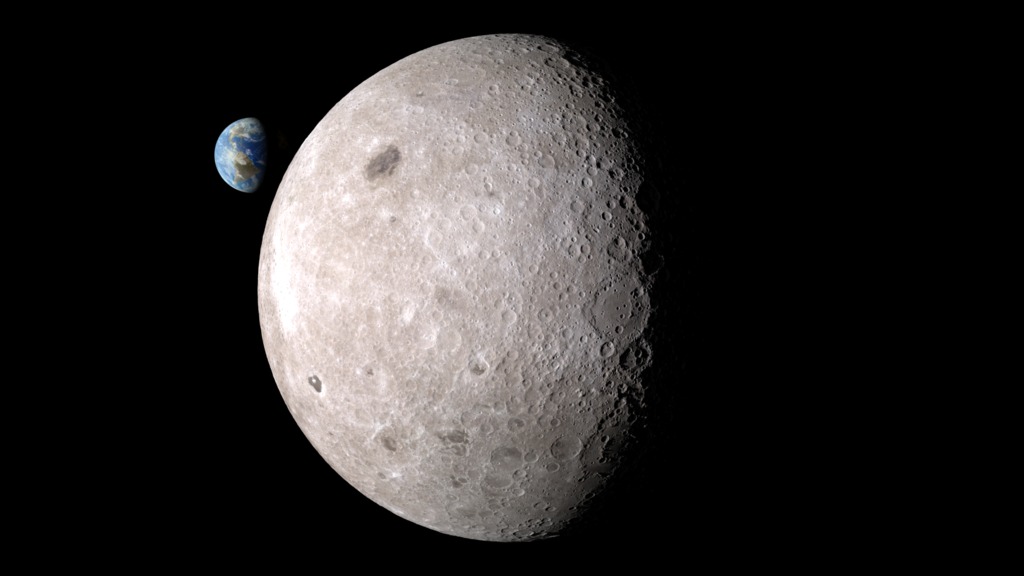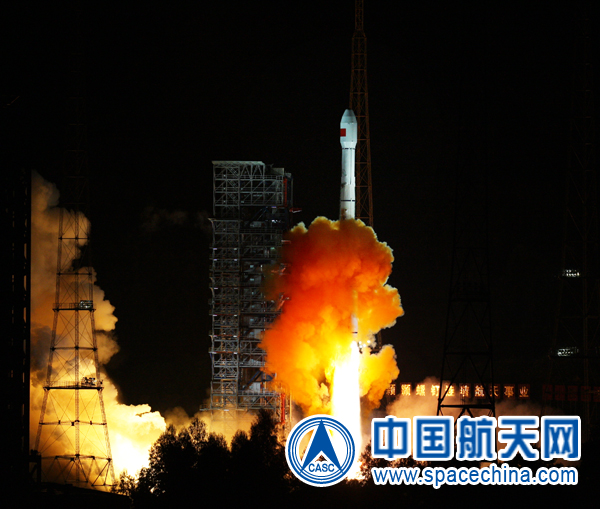Moon mystery: Who launched the rocket that will slam into the lunar far side?
'There really is no good reason at this point to think the object is anything other than the Chang'e 5-T1 booster.'

There's an ongoing saga about the object that will smash into the far side of the moon early next month.
First thought to be the upper stage of the SpaceX Falcon 9 rocket that launched the DSCOVR Earth-observation spacecraft in February 2015, it was then tagged as a leftover from the launch of China's Chang'e 5-T1 lunar mission in 2014. During a press briefing on Feb. 21, however, China Foreign Ministry spokesperson Wang Wenbin said that cannot be the case, as the Chang'e 5-T1 upper stage burned up completely in Earth's atmosphere shortly after liftoff.
But the person who led the discovery of the coming lunar impact, which is predicted to occur on the far side on March 4, isn't buying China's claim.
"There really is no good reason at this point to think the object is anything other than the Chang'e 5-T1 booster," Bill Gray, who manages the Project Pluto software used to track near-Earth objects, told Inside Outer Space. "Anybody claiming otherwise has a pretty large hill of evidence to overcome."
Video: Rocket stage to slam into moon, seen by Virtual Telescope Project
Related: The greatest moon crashes of all time

Tracking confusion?
"We do have a small mystery, in that the [U.S.] 18th Space Control Squadron lists this booster (the same one I'm saying will hit the moon) as having instead hit the Earth's atmosphere in October 2015, almost a year after launch," Gray explained. "But the only trajectory data they provide are for shortly after launch. If that's all they had to work with, then the reentry date is a prediction a year ahead of time and is not particularly meaningful."
It's sort of like trying to predict weather a year in advance, Gray added.
Breaking space news, the latest updates on rocket launches, skywatching events and more!
"But as best I can tell, this particular error didn't involve tracking data," he told Inside Outer Space. "I think it just involved confusion about two similarly named missions."
Those two would be Chang'e 5-T1, which sent a prototype lunar sample-return capsule on a journey around the moon, and Chang'e 5, which returned lunar samples to our planet in December 2020.
"Basically, I don't think 18SPCS tracked the object much after launch," Gray said. "If they had, they probably would have posted updated trajectory data. If the reentry computation is based on just that initial tracking data, with no further observations taken into account, it's not going to be any good. You can't run an orbit for an object of this sort out a year and get anything meaningful."
Also, during much of that year after launch, the Chang'e 5-T1 upper stage would have been well beyond the range of radar.
"So I very much doubt 18SPCS were actually tracking it," Gray said. "But asteroid observers did keep track of it several times over that year, and in the years afterward, such that I was able to say it would hit the moon in March."
China's Chang'e program: Missions to the moon
Wanted: Better tracking
All of this confusion raises a flag in Gray's view.
"Well, we should indeed do a better job of tracking these objects," he said. "First step would be to release 'last known positions and velocities' for objects going into high Earth orbits or solar or lunar orbits. That would have avoided the initial identification issue, where I thought this was the DSCOVR upper stage."
The bottom line for Gray is the need for better tracking of high-orbiting objects.
Meanwhile, NASA's Lunar Reconnaissance Orbiter (LRO) will monitor the moon's exosphere for any changes due to the March 4 impact, and it will look for the crater in the months to come.
LRO "will not be in a position to observe the impact as it happens. However, the mission team is assessing if observations can be made to any changes to the lunar environment associated with the impact and later identify the crater formed by the impact," NASA officials said in a statement provided to Inside Outer Space.
"This unique event presents an exciting research opportunity," they added. "Following the impact, the mission can use its cameras to identify the impact site, comparing older images to images taken after the impact. The search for the impact crater will be challenging and might take weeks to months."
Leonard David is author of "Moon Rush: The New Space Race" (National Geographic, 2019). A longtime writer for Space.com, David has been reporting on the space industry for more than five decades. Follow us on Twitter @Spacedotcom or on Facebook.

Leonard David is an award-winning space journalist who has been reporting on space activities for more than 50 years. Currently writing as Space.com's Space Insider Columnist among his other projects, Leonard has authored numerous books on space exploration, Mars missions and more, with his latest being "Moon Rush: The New Space Race" published in 2019 by National Geographic. He also wrote "Mars: Our Future on the Red Planet" released in 2016 by National Geographic. Leonard has served as a correspondent for SpaceNews, Scientific American and Aerospace America for the AIAA. He has received many awards, including the first Ordway Award for Sustained Excellence in Spaceflight History in 2015 at the AAS Wernher von Braun Memorial Symposium. You can find out Leonard's latest project at his website and on Twitter.
